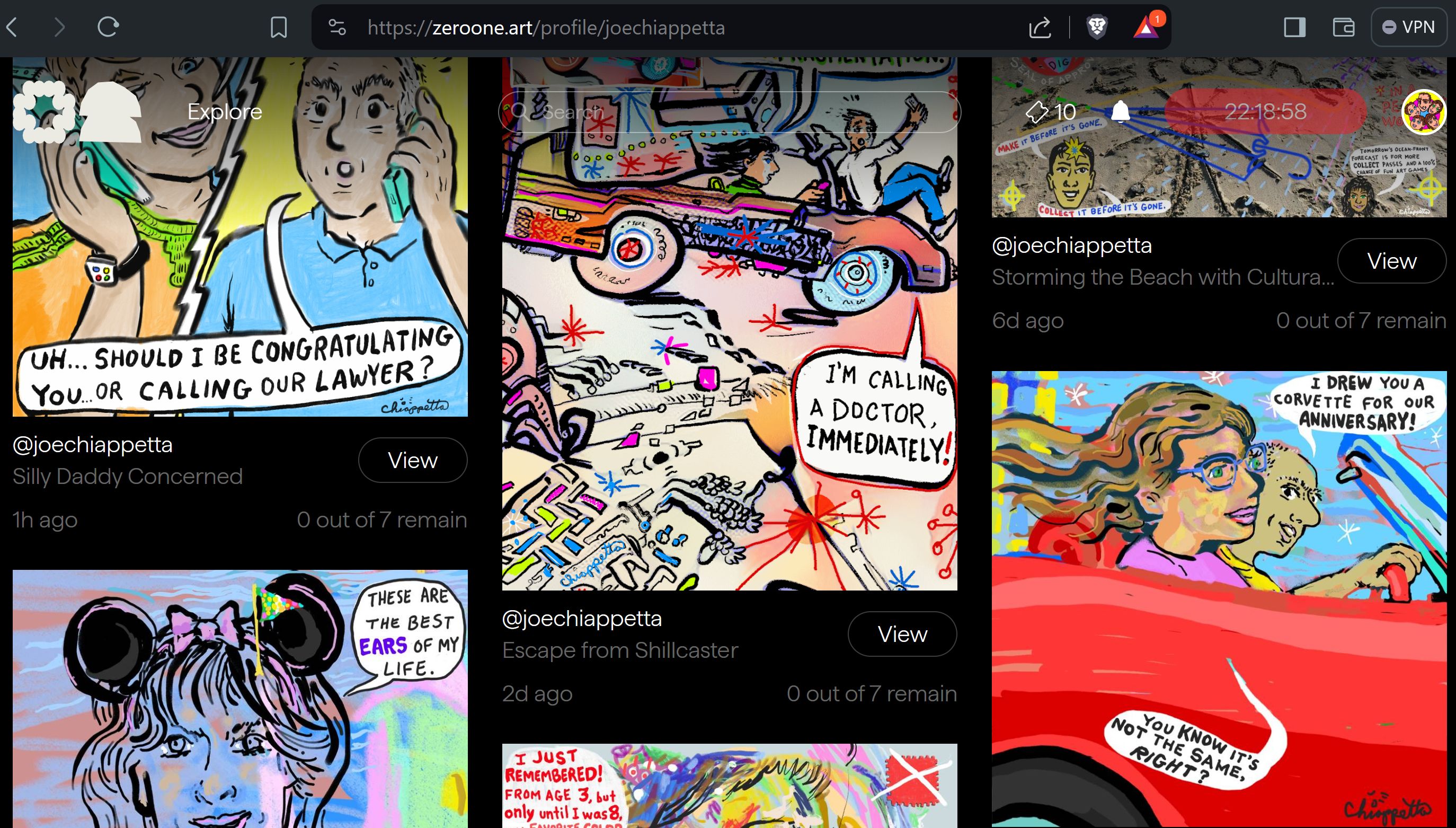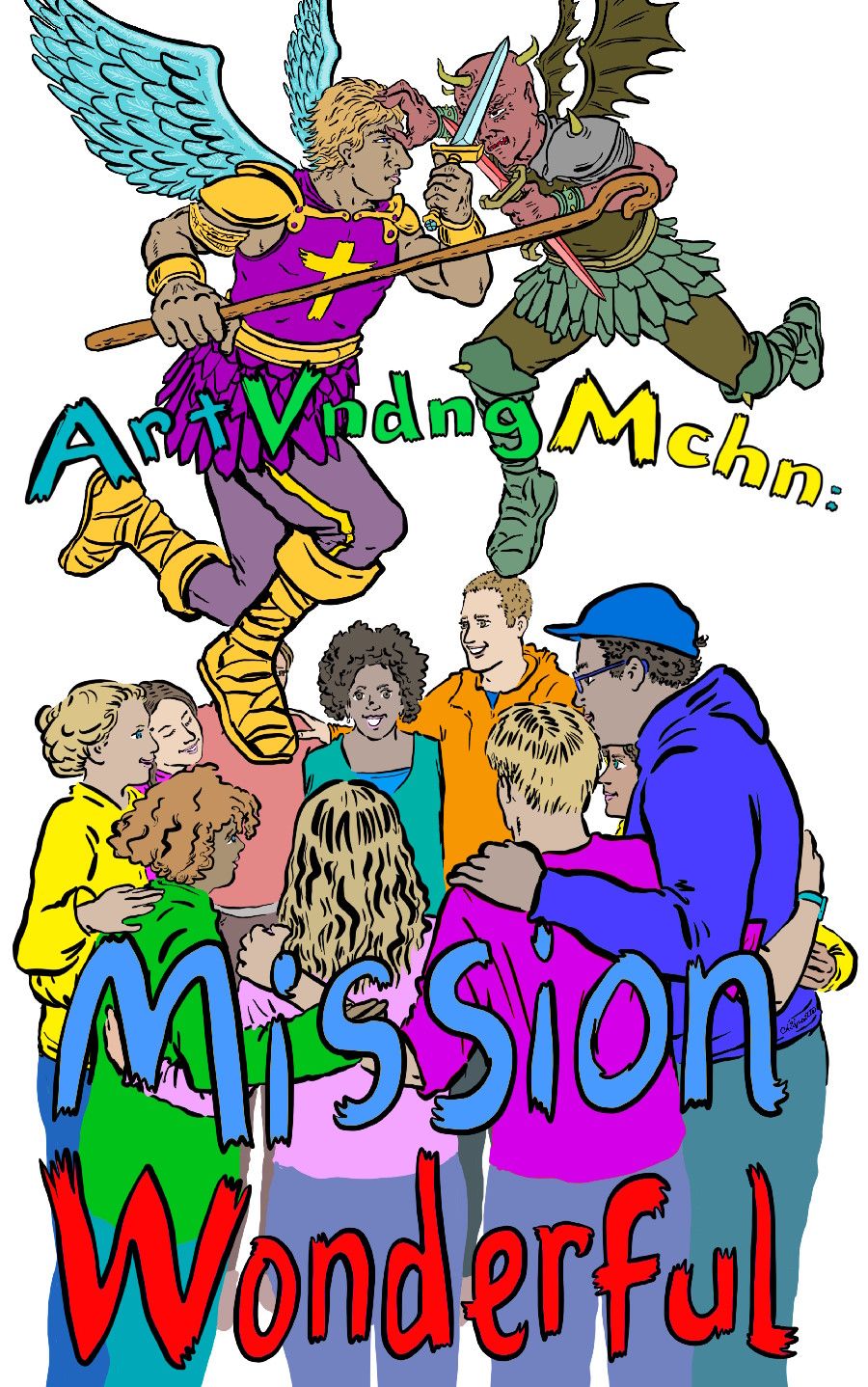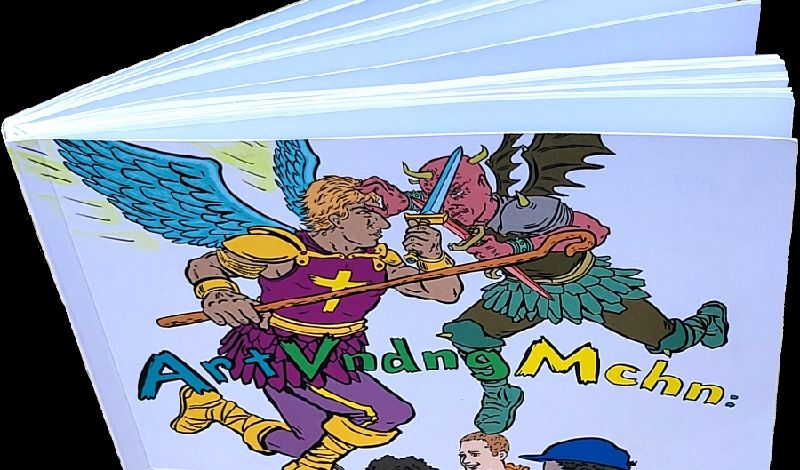Having spent the past 3 decades releasing art on the Internet, it would be an understatement to say that I have tried more than a few different art-related platforms over the years. For most of these websites, they offered timely tools for art marketplace access, publicity, sharing, and exploration. The art site I now prefer, "zeroone," has all that and so much more. As an incredibly visionary art site I have used almost exclusively for the past 10 months, zeroone also offers art ownership, gifting, and gamification. I could probably write pages of reasons why I appreciate the site, yet for the sake of brevity, here are the top 5 reasons I have spent nearly a year releasing 53 original comic NFTs on zeroone while also collecting nearly 500 art NFTs:
1. zeroone is THE place to collect original art NFTs where each person uses their own art as "currency" to gain collector passes. For every piece you release through zeroone's site, you can collect up to 10 artworks from other artists.
2. The community is typically un-snooty, easy-going, giving, and kind... which is refreshing to experience in the arts.
3. NFTs on a blockchain have historically been complicated to access, yet zeroone, running on the Avalanche blockchain, has made the NFT art collecting and releasing process ridiculously easy, quick, and free. This holds untapped potential for creative-minded people and institutions such as libraries, museums, schools, and galleries to start archiving their special collections on the blockchain where provenance is built into the platform.
4. While so much of the art world has a greed-mentality ingrained into its fabric, zeroone has a giving-mentality baked in. The only way to receive any art there is to give art.
5. zeroone is one of the rare places that has successfully turned NFT art-releasing and art-collecting into a game of sorts. It's fun and surprising to check the site and see if I'm in time to collect from one of my favorite artist's work there before all their editions run out--or before my collect passes run out. This game of art never seems to end--spurring me on to make and mint even more art in a festival of giving!
Play it with me and my son at https://zeroone.art/profile/joechiappetta and https://zeroone.art/profile/lukechiappetta



